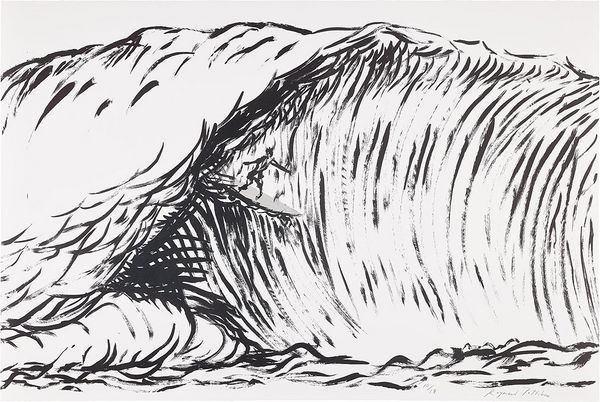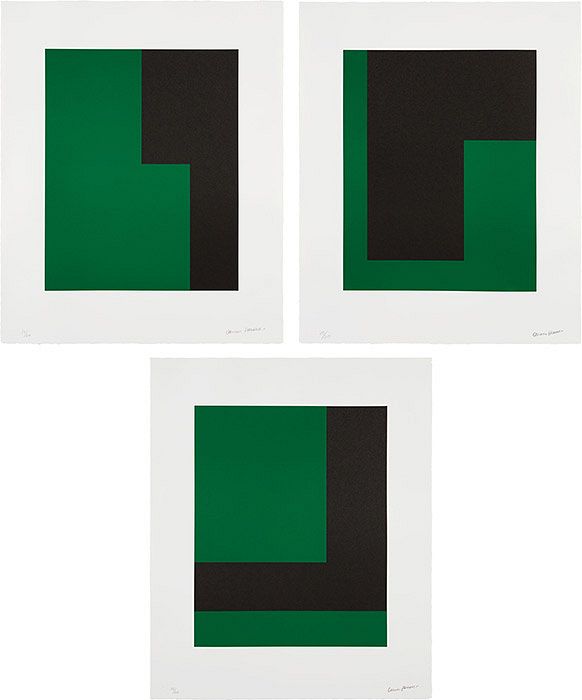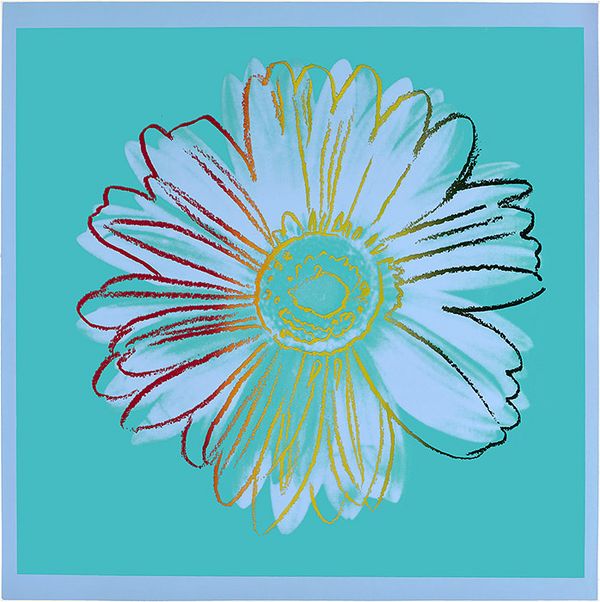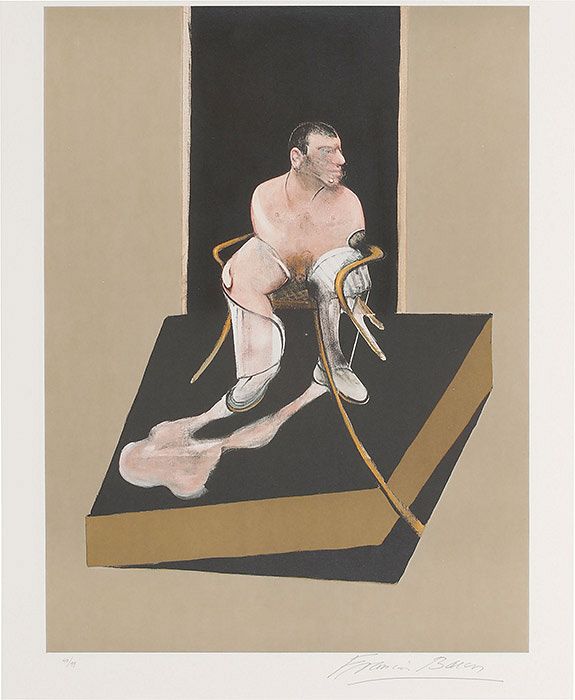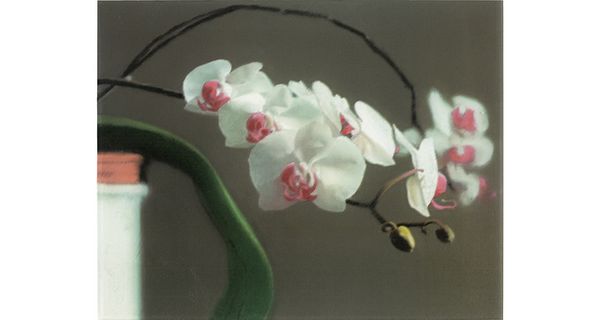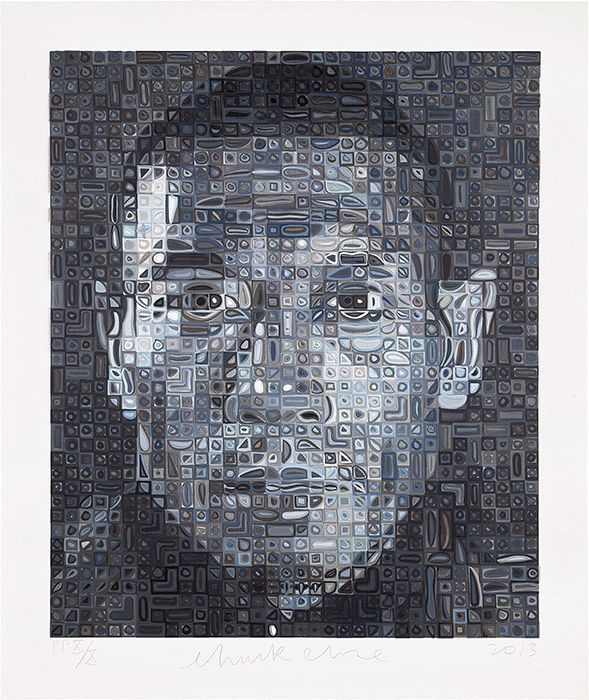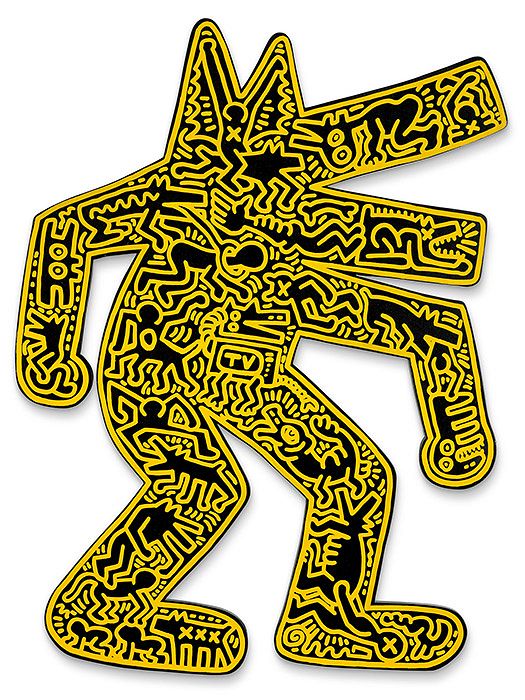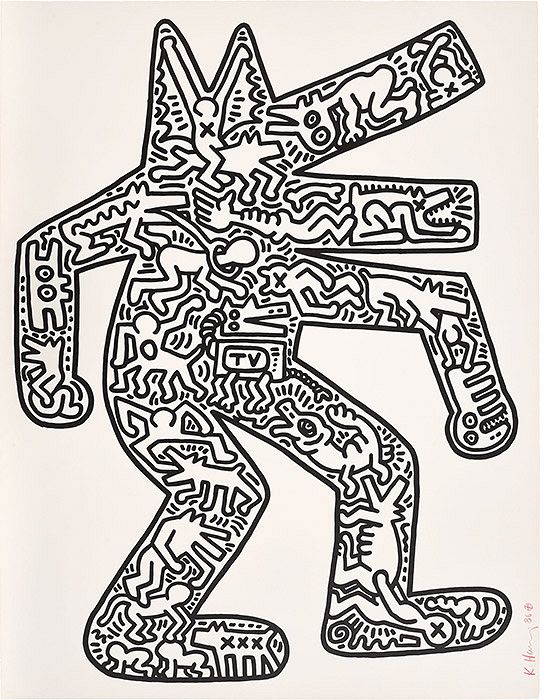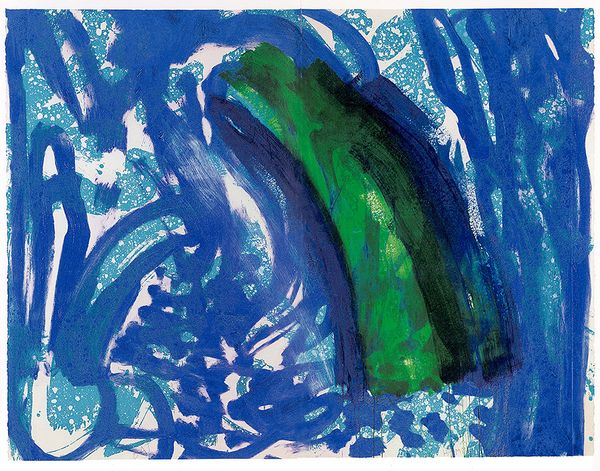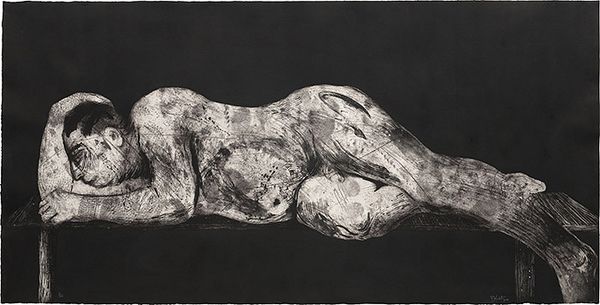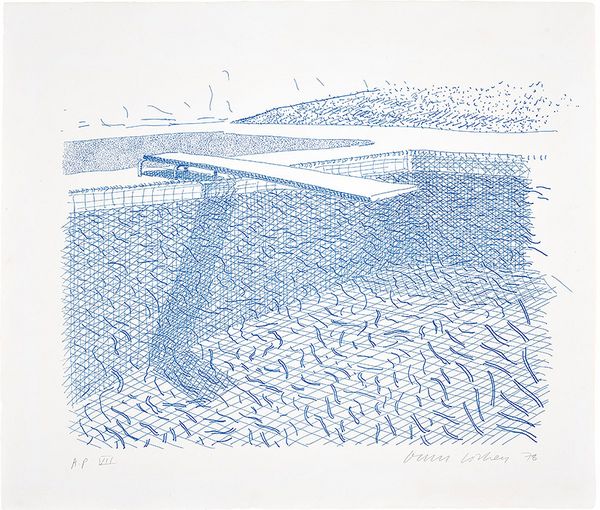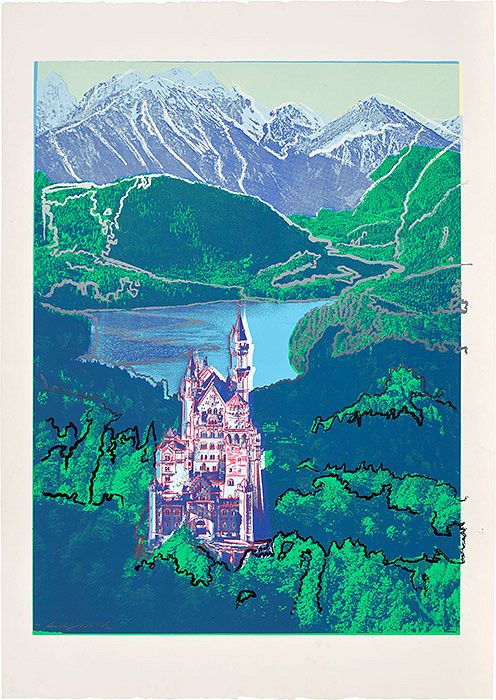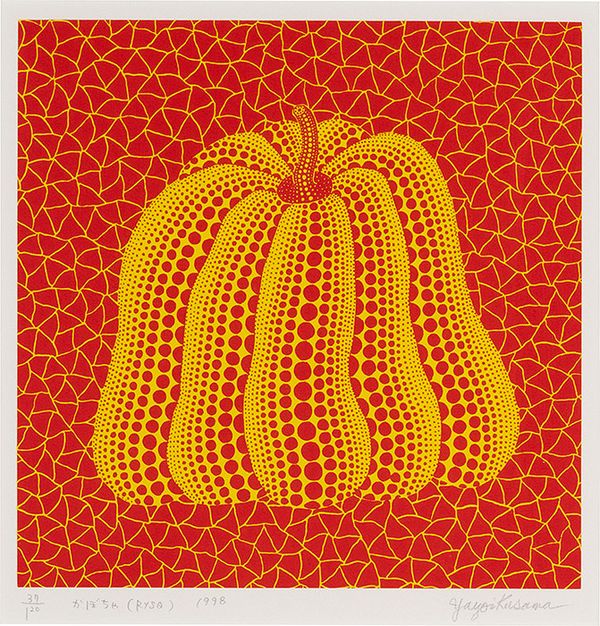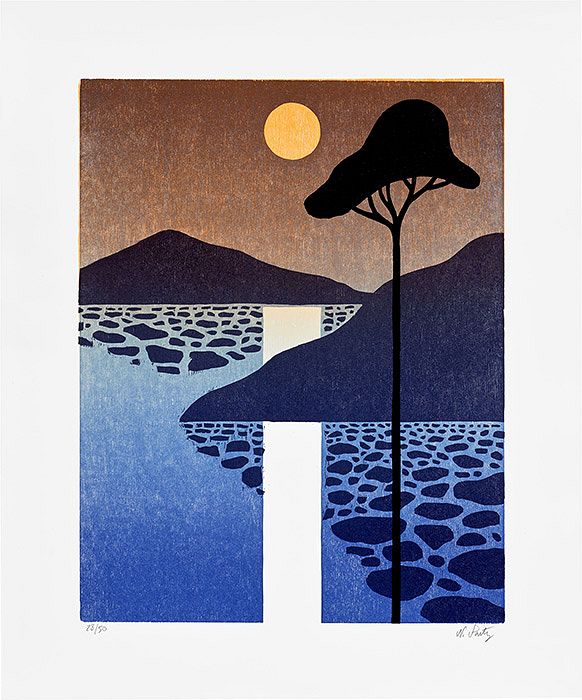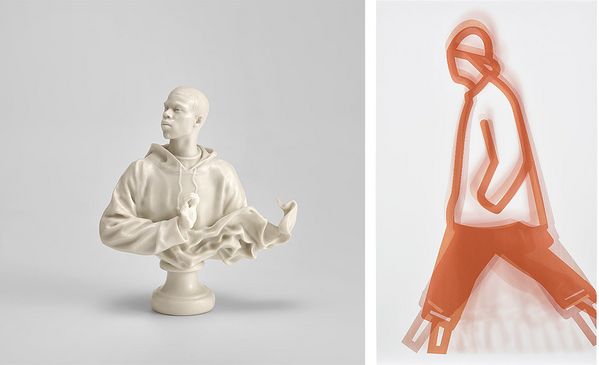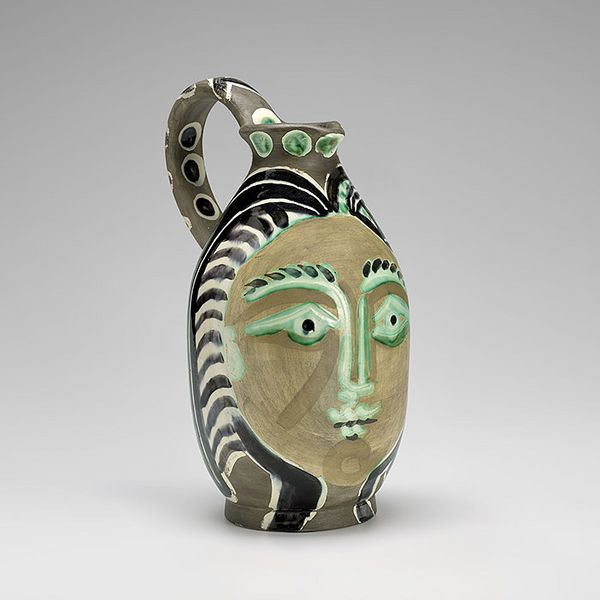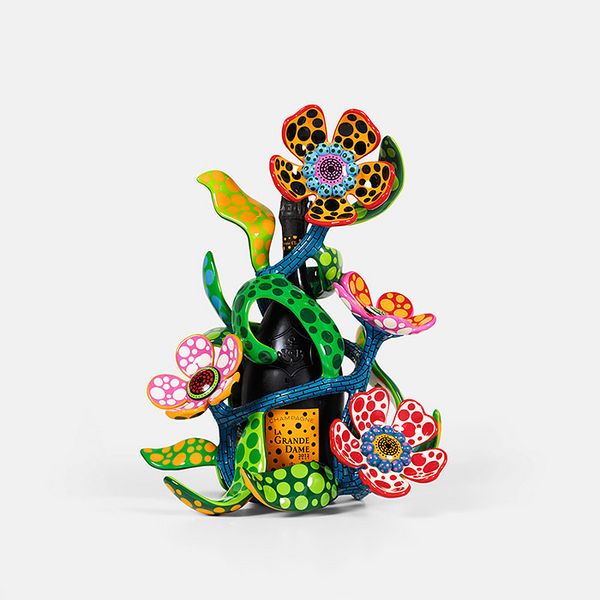Andy Warhol's screenprint Goethe, 1982 features in Phillips' Editions London Auction on 6–7 June.
In June, Phillips is offering a spectacular array of editions spread across three sales:
Evening & Day Editions on 6–7 June in London
Editions, Photographs and Design on 14 June in Hong Kong
Editions & Works on Paper on 27 June in New York
With this tour below through the breadth of the selection on offer, we cover some of the basics for those who are new to the category.
In a Nutshell
Editions are prints. Not all are prints. In fine art auctions, “editions” refers to limited-edition runs of artist multiples. They come in many materials and in all shapes and sizes. Some are even fully three-dimensional. But many are prints — and the quality and range of prints on offer in Phillips’ curated selections is truly formidable. Many well-known artists are featured, as well as others less familiar — and special attention is given to making works available at all price levels. There truly is something for everyone.
A highlight of Phillips' New York Editions and Works on Paper, Raymond Pettibon's No Title (Hermosa Beach), 2019 is a monumental lithograph, measuring 45 1/4 x 67 1/2 in., with hand-coloring in grey.
The Elephant in the Room
Prices range considerably. Modern Master prints in recent years have achieved prices in excess of a million dollars — and prices in the tens of thousands for important contemporary artists are not uncommon. But there are still many exciting choices available for smaller budgets of just a few thousand. For this reason, many see editions as a great place for new collectors just getting started. And, with interest growing, particularly among young collectors, many champion the category for its investment potential. Bottom line — prints are very accessible, which is just one of the reasons they’re so much fun.
On offer in Phillips' New York Editions and Works on Paper is the complete set of Carmen Herrera's three lithographs Verde y Negro (Green and Black), 2017.
Love at First Sight
It’s easy to fall in love with a fine print. Once you begin to look, you will see a variety of surface details — texture, pattern, weight, unique nuances — which are unlike any painting, drawing, or mass-produced reproduction. What is more, prints make it possible for people to own original works of art by many of the world’s most important artists. In many cases, pieces in that same edition are already in important museum collections.
Andy Warhol's screenprint Daisy, circa 1982 features in Phillips' Evening & Day Editions on 6–7 June in London.
Why Artists Make Prints
It’s amazing how many of the most exciting artists have made prints. Some are looking for new ways to explore their visions. Many are inspired by the phenomenal accomplishments of artists who came before. Others simply adore the craft. Then there are those eager to get their work out there at very attractive prices to as many people as possible or simply keep up with demand. There are almost as many different reasons as there are artists, but — for almost all — if there’s a market for their work, prints represent an important secondary income stream.
Francis Bacon's Portrait of John Edwards, 1986-87 — featured in Editions, Photographs and Design on 14 June in Hong Kong — is an etching/aquatint.
Yes, Prints Are Original Works of Art
In principle, every single print offered in an edition is identical to every other. That said, these are not mere copies. Every piece in an artist edition is an original work of art, as opposed to an after-the-fact reproduction. The artist edition, from its inception through to the last details of its execution, remains firmly under the control of the artist. Their signature makes it official. That print in the museum and yours — yes, it’s the same print. This is the artwork as it was conceived by the artist from the outset. It’s one hundred percent the real thing.
Another highlight of Editions & Works on Paper in New York, Roy Lichtenstein's Red Lamp, 1992 is a lithograph the artist co-published with Leo Castelli Gallery, New York.
Limited Editions Guaranty Rarity
Artists produce prints in limited quantities to maintain rarity. The smaller the edition, the rarer and more valuable. Of such crucial importance is the size of the edition that, in most cases, it’s inscribed on the piece next to the artist’s signature — with the sequential number of the work followed by the total size of the edition as a whole. There are open editions out there, to be sure, but most editions are limited. Often, the artist also indicates the number of artist proofs (APs) in addition to the edition size. Essentially test prints the artist uses to fine-tune the variables as they strive towards perfect, these are also sometimes on offer. Once the artist establishes the total, they never produce more that. In principle, they destroy the plates.
Gerhard Richter's Orchidee II (Orchid II), 1998 in Evening & Day Editions on 6–7 June in London is an offset lithograph numbered 15/25. The edition also included 5 artist proofs.
Technical Expertise
Printmaking is a highly specialized medium. In most cases, its materials and techniques are outside artists’ usual practice. For this reason, many have relied on an elite cadre of master printmakers to help realize their unique artistic visions. Through endless experimentation and virtuoso technical finesse, these geniuses of the craft have become legends for helping to develop and refine new procedures to achieve the impossible. Such shops as Pace Prints, Crown Point Press, Gemini G.E.L., Tyler Graphics, and Tamarind Institute have achieved world famous status and the editions they produce are highly desirable.
Chuck Close's Zhang Huan II, 2013 — featured in Editions, Photographs and Design on 14 June in Hong Kong — is a 59-color silkscreen with airbrush.
Print Publishers
An edition’s publisher is also often identified. In some cases, this is the artist’s own studio. More often, it’s the workshop that creates the prints. But, for many editions, the publisher is an independent entity that commits to financially backing the production of the works and orchestrates their creation and distribution. Top tier publishers of longstanding reputation guaranty the edition’s quality and integrity. They typically choose to work with the most exciting artists of an era in anticipation of high market demand and seek to aid in furthering their visions in fresh and unexpected ways.
Richard Serra's Finally Finished III, 2018 in Evening & Day Editions in London was published by Gemini G.E.L., Los Angeles. Many people think of prints as small, but — at 74 3/4 x 59 1/2 in. — this is an etching on a huge scale.
Printmaking Techniques
Below are two Keith Haring prints — same artist, same image — from two of his most desirable editions. Seeing them together, we can appreciate how the artist wielded screen printing and lithography techniques to create very different effects. Printmaking is like that. What kind of print it is helps to shape the character of the object
This unique test print of Keith Haring's screenprint Dog, 1986 is in Evening & Day Editions on 6–7 June in London.
This one, featured in Editions, Photographs and Design on 14 June in Hong Kong, is another Keith Haring Dog from 1986. But here, it comes to life as a grano-lithograph on Rives 300g rag paper.
Types of prints popular in the 20th century included etchings, aquatints, woodcuts, lithographs, and silkscreen prints. Each has its masters and its devotees, and all are typically well represented in an Editions sale at Phillips. Some prints on offer might be the product of multiple printmaking techniques. Others feature unique hand techniques. Familiarizing yourself with the fundamentals of the processes employed will deepen your appreciation of the extraordinary magic unfolding before your eyes.
Another stellar print in Editions, Photographs and Design on 14 June in Hong Kong is Frank Stella's Ahab (Axsom 188), 1989, which masterfully combines screenprint, lithograph and linoleum cut techniques, plus hand-coloring, marbling and collage.
Etching
Etching is among the most popular printing techniques. A metal plate — usually copper — is coated with a wax-based, acid-resistant ground. The artist draws into the ground by scratching with a sharp needle. The plate is subsequently placed in an acid bath, which eats into the areas unprotected by the ground. Ink is then applied to the plate and, when wiped, it deposits in these recesses for transfer to the paper. The longer the plate is left in the bath, the deeper and thus darker the lines will print. This type of print is a drypoint.
Yet another highlight of Editions, Photographs and Design, Jackson Pollock's Untitled, 1944-45, beautifully combines engraving and drypoint techniques.
In aquatints, tonal areas are created with an acid-resistant powdered rosin that is applied to the plate and made to adhere with controlled heating. When dipped in the acid bath, the unprotected areas on the plate will pit to hold the ink. Protected areas will print white.
A highlight of Evening & Day Editions on 6–7 June in London is Howard Hodkin's Into the Woods, Spring, 2001-02, which combines lift-ground etching and aquatint with carborundum and extensive hand-coloring in acrylic.
Drypoint and aquatint are distinct etching techniques but they are complementary — with drypoint optimal for nuanced linework and aquatint ideal for controlled gradations of tonal areas, resembling ink or watercolor washes — and they are often used in combination.
William Kentridge's Sleeper Black, from Sleeper Series, 1997 — also featuring in Evening & Day Editions in London — is a masterful blend of etching, aquatint, and drypoint techniques.
Lithography
The technique of lithography is based on the mutually repellant nature of oil and water. Litho is the Greek word for stone. Modern lithography often utilizes an aluminum plate, but in the beginning, when it was invented in the late 18th century — and sometimes still — limestone slabs were used.
Willem de Kooning's lithograph Souvenir of Montauk, 1970 will feature in Editions, Photographs and Design on 14 June in Hong Kong.
The artist draws or paints onto stone with a greasy substance, such as oil, fat, or wax. It’s usually a special litho crayon or a greasy ink known as tusche, which is pigmented to give the artist a precise idea of how dark it will print. The plate is then etched in such a way that only the greasy areas take ink. How greasy the mark is will determine how much ink adheres to the plate for transfer. The end result is a precisely calibrated and exquisitely detailed register of marks and tones in one identical print after another for significant runs.
An artist's proof of David Hockney's lithograph Lithographic Water Made of Lines, 1978 highlights Evening & Day Editions in London.
Offset
Offset is a subset of lithography. Ink transfers from a metal plate to a rubber blanket and then onto the printing surface, typically paper. Developed as an industrial process in the late 19th century for large commercial applications, it was long dismissed for its inferior quality. But recent artisanal variants have breathed new life into the technique — and the world is beginning to see how beautiful it can be.
Screen Printing
Screen printing was invented in China during the Song Dynasty (960–1279 AD). Experiments with photo-sensitive emulsions in the West in the early 20th century led to its commercial development. But it was Andy Warhol in the early 1960s who popularized the technique as a fine art medium.
This signed trial proof of Andy Warhol's screenprint Neuschwanstein, 1987 is among the artist's prints on offer in Editions, Photographs and Design on 14 June in Hong Kong.
In screen printing, ink is squeegeed onto the paper through a fine mesh. Originally, the mesh was silk, although synthetics are more common today. Certain portions of the mesh are made impermeable due to stencils cut to block the ink. Thus is the image created. The look is fresh, modern, and active. One great advantage of screen printing is that it can be on canvas as well as paper — or indeed on any substrate. No printing press is used. Another is that the ink can be applied in thick layers, resulting in highly saturated color.
Yayoi Kusama's screenprint Pumpkin, 1998, ed. 37/120 is also featured in Phillips' Hong Kong selection.
Woodcut
The oldest form of printmaking is woodcut relief printing. The artist cuts away portions of a wooden block. Ink is then rolled out evenly onto the raised area that remains, and it's pressed onto a sheet of paper. Often, the cut marks impart a vigorous, muscular effect to the image. Linocuts, which are cut from sheets of linoleum, are very similar, but connoisseurs of woodcut often savor the grain of wood that is often visible in the final print.
Also featured in Evening & Day Editions in London is Nicholas Party's woodcut Sunset, ed. 25/50, published by Hauser & Wirth.
Giclée Prints
It’s worth noting that in a Phillips Editions auction, there is much more to discover than traditional printmaking techniques. Since the advent of advanced digital technology, many artists have had success with new approaches, including limited-edition archival inkjet printing.
Phillips' offering in Hong Kong includes On The Virtues, 2021 by Damien Hirst comprising the complete series of eight laminated giclée prints in colors, flush-mounted to aluminium.
Producing a high-quality archival inkjet print from a digital file, Giclée print technology was invented only in the late 1980s. This most contemporary of all techniques was developed specifically for fine art prints. Traditional printmaking requires colors to be separately mixed and printed, one at a time, with a distinct plate used for each. In a Giclée print, they’re sprayed all at once onto a rotating drum. This technology is high resolution and optically flawless, and it allows artists maximal control through color correction.
Monoprints
A monoprint is an absolutely unique print. The artist applies inks directly onto the plate, which they then press onto the sheet. Sometimes, they’ll make repeated pressings on a single sheet. It's a print. But, technically speaking, it’s not a multiple at all.
It All Begins with Looking
Prints are a wonderfully diverse arena that speaks to the gamut of sensibility across the full spectrum of Modern and Contemporary Art. In the 20th century, artists like Pablo Picasso, Andy Warhol, and Roy Lichtenstein took printmaking to the heights of excitement. Those of us who love prints have come to look to them for surprising segues and tangents and brilliant fresh avenues of thought in the work of all our favorite artists in each generation. Never let anyone tell you what to buy. There are a lot of experts out there, but there’s nothing in the world like making a discovery of your own.

